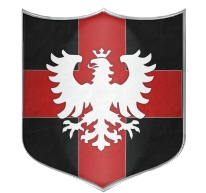Culture of Lytera
Lyteran culture is the symbolism associated with the Kingdom of Lytera and its people. It is a primarily Western culture heavily influenced by that of the German Empire,Tsardom of Russia and Japan at a national level and often by the culture of the surrounding larger nation in regards to the individual exclaves of the Kingdom. It has been shaped since the foundation of the nation by the customs, ideas, and contributions of those who have joined or been associated with Lytera.
Language
English is the most commonly spoken language in Lytera, known and used daily by the majority of the population. English is generally the only language used for government business, although some Latin is rarely used for laws. German, Russian and Japanese are all official languages, used mostly in the Government and Army. French and Spanish are also used on a more local level in the south of the nation. The conlang of Lyteran is also recognised, though not often used.
During the times when Lytera was a subject state of the Republic of Clubhausia, the Old Clubhausian language was used for some official documents, and whilst no longer used is recognised as a minority language in Lytera.
Music
The national anthem of Lytera was formerly Lyteralied, but on the 25th of February it was announced this would be changing.
The military used extensive foreign military music for it's marches, which can be found on the Lyteran Armed Forces page.
Media and broadcasting
Residents of the Lyteran enclaves around the UK often watch and listen to official British Media. The Royal Lyteran News is the official Lyteran news service, founded by Amelia I. The news is government operated in practice, but is in fact personally overseen by the Monarch.
The Royal Lyteran News, or RLN, also run a YouTube channel, where they produce news reels and produce shows like The Battle For Lytera, a sci-fi fantasy drama about anime characters fighting off micronational memes. Public broadcasts by the Monarch are also published online by RLN.
Religion
Lytera is an offically Atheist state, though has, throughout history, had two national religions. The first was Pishism, a local religious group from the times of the Ruislip Tetrarchy. Originally following the Western Branch, Lytera switched to supporting Eastern Pishism due to popular support. It lost it's status as a national religion during the dormant 2015-17 period, though has seen a resurgence in popularity with the interests of protecting the older culture from being forgotten. Pishism is still seen in high regard by many due to the important events caused by Pish and the higher entity that brought Pish back from the dead. Owing to this, the term "Being X" has been adopted by the Lyteran Government when discussing divine beings. The second was w:Russian Orthodox which was briefly the recognised religion due to close links with the local Orthodox church, though this has largely been dropped due to the atheist nature of a majority of the people of Lytera's population.
Most of Lytera's population now openly worship no-religion, and the 2020 Religious Act protects people from religious discrimination. No religious denominations have officially registered in Lytera, but popular discussed religions include Christianity,Islam,Judaism,Confucianism,Shinto,Buddhism,Sikhism,Hellenistic,Satanism,Paganism,Pishism and Frankism.
Monuments
No true monuments exist in Lytera, however, in the Clubhausia region, The Grave of Pish exists, considered by the Western Pish denominations to be where Pish was buried, and by the others as a sacred site to pray at. In addition, the remains of the Monument of Pish exist at St. Cavendish, but due to it's damaged nature is kept safely in the Museum.
National symbols
Flag
 |
|
| Use | National flag and ensign |
|---|---|
| Proportion | ~7:11 (427:640) |
| Adopted | 2010 |
| Design | A vertical tricolour of red, white and black. |
| Designed by | Amelia I |
The national flag of the Kingdom of Lytera is the flag used to represent the country and its people. The current flag was designed by Amelia I while still Grand Duchess.
The design is loosely based on the flag of the German Empire rotated vertically, though the design was adopted before the resemblance was noticed. A flag poll in early 2020 considered changing the flag[1] but it was won by the original flag.
Coat of arms
| Coat of Arms of the Kingdom of Lytera | |
|---|---|
 | |
| Details | |
| Armiger | The Queen of Lytera |
| Adopted | 9th June 2020 |
| Escutcheon | Quaterly: 1st the flag of Normandy 2nd and 3rd the Lyteran eagle 4th the flag of Middlesex White inescutcheon representing purity. |
| Motto | Iunctus et Divitiae |
The coat of arms of Lytera was created on the 9th June 2020, replacing the original 2017 Design. It shares the same design as the Royal Standard.
Unlike many coat of arms, only the Escutcheon is present. This is divided into four quadrants. The second and third quadrants represent the Kingdom and are comprised of the Lyteran Eagle, a longstanding symbol of the nation.; the first quadrant represents the Kingdom of Normandy, of which the Royal Family are descended from; the fourth quadrant is comprised of the former coat of arms of the region of Middlesex, which Lytera originated in – while no longer in existence, the term is often used. Lastly, a white inescutcheon represents the purity of the nation and a standing for peace.

National animals
The koi is the national animal of Lytera in honour of the fish that resides in Lake Koi. However, Countess Bailey is considered the unofficial mascot.
Public holidays
| Name | Date | Remarks |
|---|---|---|
| New Year's Day | 1 January | The beginning of the year in the Georgian Calendar. Public holiday. |
| Emperor Norton I Day | 8 January | Date of death of Norton I, An inspiration to all micronations. |
| Duke Michael's Birthday | 25 Feburary | Former member of the regency council. Current King's council member |
| Dementia Awareness Week | 3–9 April | Dedicated to all people who have dementia. |
| Sabaton Day | 1 May | A celebration of the nation's favourite metal band. |
| Celebration of the Council | 6 May | Celebrating all who work to improve the nation. |
| Founding Day | 19 August | Foundation of the Kingdom. |
| Revolution Day | 21 August | Public holiday on celebrating the coup against King Matthew. |
| Duke Matthew's Day | 29 August | Abolished after the revolution. Reinstated one year later as a holiday as a show of goodwill, though the official date was moved, as the Duke was born on the same date as the founding. |
| Queen's Day | 3 October | The Queen's Birthday. |
| Duchess Karen's Birthday | 8 October | Celebrating the King's mother's birthday. |
| Marion's Memorial Day | 1 November | The day of the remembrance for High Regent Marion, The King's Great Grandmother, who died on what was her 98th birthday. |
| Remembrance Day | 11 November | The day of the remembrance of those who fell in combat. |
| Drill Day | 12 November | Official Parade round Lake Koi to showcase the nations military discipline. |
| Christmas Day | 25 December | Presents are given out, family appreciate each other. |